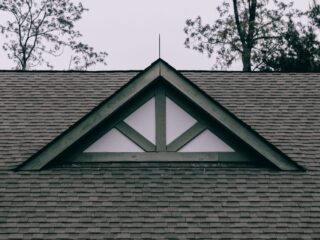
A leaky roof is every homeowner’s nightmare. The dripping water, the potential for structural damage, and the looming repair costs can create a significant headache. However, understanding the anatomy of a roof leak can empower you to identify the issue and potentially even fix it yourself before it escalates into a major problem. This article will delve into the common culprits behind roof leaks, how to spot them, and offer guidance on repairs.
Understanding Your Roof’s Vulnerable Points
Before we dive into specific leak locations, it’s important to understand the general areas where your roof is most susceptible to water infiltration:
- Flashing: These metal strips found around chimneys, vents, skylights, and dormers are meant to create a watertight seal. However, they can corrode or become loose over time.
- Shingles: Damaged, missing, or aging shingles are a common entry point for water. Wind, hail, and debris can all contribute to shingle damage.
- Valleys: The areas where two roof planes meet are called valleys. These areas are prone to leaks because water naturally flows towards them.
- Roof Penetrations: Any object that penetrates your roof, like a plumbing vent or a satellite dish, creates a potential leak point.
- Attic Ventilation: Poor attic ventilation can lead to moisture buildup, which can rot the wood and lead to leaks.
Identifying Common Roof Leak Culprits
Damaged or Missing Shingles
This is perhaps the most common cause of roof leaks. Inspect your roof for shingles that are cracked, curled, or missing altogether. Pay close attention to areas that receive the most direct sunlight, as this can accelerate shingle deterioration.
Compromised Flashing
Flashing is typically made of metal, and it can rust or corrode over time. Look for any signs of damage or deterioration around chimneys, vents, skylights, and dormers. Also, check if the flashing is properly sealed to the surrounding roofing material.
Clogged or Damaged Gutters
Gutters are designed to direct water away from your home. If they’re clogged with debris or damaged, water can back up under the shingles and cause leaks. Regularly clean your gutters and check for any signs of damage.
Ice Dams
In colder climates, ice dams can form on the edge of your roof, preventing melting snow from draining properly.
The trapped water can back up under the shingles and cause leaks. If you live in an area prone to ice dams, consider installing a roof heating cable to prevent their formation.
Condensation in the Attic
If you notice water stains on your ceiling or walls, it may be due to condensation in your attic. This often occurs when warm, moist air from inside your home rises and comes into contact with the cold roof deck. Improve attic ventilation to prevent condensation-related leaks.
Fixing Roof Leaks: DIY vs. Professional Roofers
The decision of whether to tackle a roof leak yourself or hire professional New Braunfels roofers often depends on the severity and location of the leak. Small, easily accessible leaks may be suitable for a DIY repair, while larger or more complex issues are best left to the professionals.
DIY Roof Leak Repair Tips
If you decide to embark on a DIY roof repair, it’s crucial to prioritize safety. Always use a sturdy ladder, wear shoes with non-slip soles, and consider utilizing a safety harness when working on your roof. If you’re not comfortable working at heights or the leak seems too complex, it’s always best to err on the side of caution and call a professional.
Before you start any repairs, gather all the necessary tools and materials. This may include roofing cement, shingles that match your existing roof, flashing, nails, and a caulking gun. If you’re using a roof repair kit, carefully read and follow the instructions, as different types of leaks may require different repair methods.
When to Call a Professional
If the leak is extensive, difficult to access, or you’re unsure of its cause, it’s wise to seek the help of a professional roofer. They have the experience, knowledge, and specialized tools to diagnose and repair even the most complex roof leaks. If you have multiple leaks, it could indicate a more widespread issue, such as a damaged roof deck or faulty flashing, that requires professional assessment and repair.
If you suspect that your roof has suffered structural damage due to a leak, it’s imperative to call a professional immediately. Attempting to repair structural damage yourself can be dangerous and may exacerbate the problem. A professional roofer or structural engineer can assess the extent of the damage and recommend the best course of action to restore your roof’s integrity.
Preventing Future Roof Leaks
The most effective way to deal with roof leaks is to prevent them from occurring in the first place. Regular roof maintenance is key to ensuring the longevity and resilience of your roof. This includes scheduling annual inspections, preferably before the onset of winter or the rainy season. During these inspections, look for any signs of damage, such as missing or cracked shingles, deteriorating flashing, and clogged gutters.
Any issues you find must be addressed promptly. Small problems, if left unaddressed, can quickly escalate into major leaks and costly repairs. Proper maintenance, such as keeping gutters clean, trimming overhanging branches, and removing debris from your roof, can go a long way in preventing future leaks. Additionally, consider investing in preventative measures like roof coatings or sealants that can protect your roof from the elements and extend its lifespan.
Conclusion
Roof leaks can be a frustrating and expensive problem for homeowners. However, by understanding the anatomy of your roof and the common culprits behind leaks, you can take steps to identify and fix issues before they cause significant damage. While some minor leaks may be suitable for DIY repairs, it’s always a good idea to consult with a professional roofer for roof repairs Dallas or any other issues. Remember, regular roof maintenance is key to preventing leaks and ensuring the longevity of your roof. By taking proactive steps to care for your roof, you can protect your investment and enjoy peace of mind for years to come.







